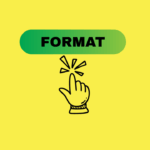Q: Why don’t journals update their websites to reflect changes in reference styles?
Hello there, I have a question regarding the author instructions/submission guidelines of journals and I hope someone here can provide me with some insights! In the last weeks I was reading many different author instructions of different journals in order to check the reference style they use. In many cases I have noticed that the reference style actually used by a journal differs from the style given in the reference instructions of that journal. Sometimes the differences are small like that the actual style uses italicized journal names, while the author instrcutions recommend non italicized. Or "et al." is used actually for more that 10 authors while the instrucions tell to use it for more than six.Sometimes issue numbers are not requested, but the journal uses them in the references of published articles generally. Or the journal name section is terminated by a period in the instructions, in the published articles not. But sometimes the differences are really blatant. So I came across several instances where the actual used style is totally different from the style given in the instructions. So it might be that the journal now uses a kind of NIH/NLM Vancouver, while the instructions use some kind of APA style, with totally different punctuation etc. When looking back in the article history I often found that the style of the author instructions was used several yers ago and changed then. But the instructions did not. When I noticed how common this is, I really was bluffed and I still am. I wonder how this can be and why the journals dont seem to be interested in keeping their guidelines up to date. I am not familiar with publshing workflows but I imagine that outdated author instructions for referencing lead to tons of wrong formatted submissions, which have to be reformatted either by the author or by the journal editors/typesetters. I think this lead to extra efford and costs ( or nervs of the authors) that could easily be avoided. As said, I am not familiar with workflows of journals. Maybe the references are reformatted anyway while the journal production, at least at big publishers like Elsevier or Wiley, but I don`t know. Often journals explicitly say that the submissions have to be formatted exactly like the instructions recommend. But they use a totally differnt style. I really would love to know why and how it comes to this discrepancy and why journals obviously do not feel the need to do something against this. Maybe someone here can tell me, that would be great!! Thanks.
As you have correctly observed, there is often a discrepancy between the reference style actually used by a journal and the style recommended in the author-instructions. Journal styles might evolve over time based on common usage/application by authors, but the journal guidelines might be managed by a different department that takes care of the website, so the guidelines are not updated on time.
Generally, journals are appreciative if authors point out discrepancies; therefore, whenever you come across such a discrepancy, you can write to that specific journal to point it out and clarify the preferred style, especially when the style completely differs between guidelines and sample papers (for example, APA vs. MLA).
Having said that, many journals, while giving a general recommendation for what style guide to follow, now focus on consistency in references more than anything else. So, for example, they will generally not reject a paper because journal names have been italicized when they should not be, but will not appreciate if there are inconsistencies within the reference list itself (some journal names italicized while others are not). Also most journals and authors now use a reference manager software to format references, so consistency in style is easier to achieve either at the submission or the typesetting stage.
Related reading:
Answer: Dear editage team, Very interesting answer. All you said makes perfectly. But, all this is not a sufficient explanation for the fact that sometimes the author instructions show a completely different reference style in comaprison to the one that is actually used. One example, the Journal of Human Nutrition and Dietetics. Here the author instructions with the reference samples: http://onlinelibrary.wiley.com/journal/10.1111/(ISSN)1365-277X/homepage/ForAuthors.html Here they explicitly tell that the reference style has changed in October 2014. Here the given reference samples: Journal articles 1. Steele JR, Meskell RJ, Foy J et al. Determining the osmolality of over-concentrated and supplemented infant formulas. J.Hum Nutr Diet. 2013;26:32-37. 2. Nelson M, Margetts BM & Black A. Letter to the Editor. J Hum Nutr Diet. 1993;6: 79-81. 3. Dixon N. Writing for publication- a guide for new authors. Int J Qual Health Care. 2001;13: 417-421. And here a actual used reference from an published article: http://onlinelibrary.wiley.com/doi/10.1111/jhn.12524/full Roos E, Prattala R, Lahelma E, et al. (1996) Modern and healthy?: Socioeconomic differences in the quality of diet. Eur J Clin Nutr 50, 753–760. The difference could not be much bigger, and this lasts obciously since Oct 2014. My intention is not to criticise the journal of Wiley or someone else. I just want to understand how this can stay unnoticed for three years. This can only mean that the way the papers and the references are submitted are totally irrelevant for the procuction process of the articles and do not effect the production workflow. If it would cause extra effort and time, this would cause extra costs and thus surely would be be changed in order to avoid the need to reformatt the references. So the production of the articles and the typesetting of the references must be unaffected by the way how the references are submitted by the authors. Maybe you can tell me once again some details about this, I would appreciate this a lot and would be very thankful! Best wishes
Answer: Sorry, that was dissformatted for soem reason. Hope this one will be better: Dear editage team, Very interesting answer. All you said makes perfectly sense to me. But, all this is not a sufficient explanation for the fact that sometimes the author instructions show a completely different reference style in comaprison to the one that is actually used. One example, the Journal of Human Nutrition and Dietetics. Here the author instructions with the reference samples: http://onlinelibrary.wiley.com/journal/10.1111/(ISSN)1365-277X/homepage/ForAuthors.html Here they explicitly tell that the reference style has changed in October 2014. Here the given reference samples: 1. Steele JR, Meskell RJ, Foy J et al. Determining the osmolality of over-concentrated and supplemented infant formulas. J.Hum Nutr Diet. 2013;26:32-37. 2. Nelson M, Margetts BM & Black A. Letter to the Editor. J Hum Nutr Diet. 1993;6: 79-81. 3. Dixon N. Writing for publication- a guide for new authors. Int J Qual Health Care. 2001;13: 417-421. And here a actual reference from an published article: http://onlinelibrary.wiley.com/doi/10.1111/jhn.12524/full Roos E, Prattala R, Lahelma E, et al. (1996) Modern and healthy?: Socioeconomic differences in the quality of diet. Eur J Clin Nutr 50, 753–760. The difference could not be much bigger, and this lasts obciously since Oct 2014. My intention is not to criticise the journal of Wiley or someone else. I just want to understand how this can stay unnoticed for three years. This can only mean that the way the papers and the references are submitted are totally irrelevant for the procuction process of the articles and do not effect the production workflow. If it would cause extra effort and time, this would cause extra costs and thus surely would be be changed in order to avoid the need to reformatt the references. So the production of the articles and the typesetting of the references must be unaffected by the way how the references are submitted by the authors. Maybe you can tell me once again some details about this, I would appreciate this a lot and would be very thankful! Best wishes
Answer: I checked a number of journals from different publishers like Cambridge Press, Elsevier, CRISCO publishers, Taylor & Francis etc. All the journals had their referencing style matching that of their published articles. The case you have mentioned must be a one-off case. I think it must be an oversight by the journal or there might be a shortage of technical staff/expertise which has resulted in not noticing this discrepancy. As I have mentioned, you should write to the journal pointing out this discrepancy and requesting that the website be updated.If the journal has, for whatever reason, let this discrepancy go unnoticed, the authors should bring this to the notice of the journal.



